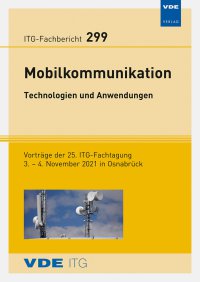Centralized Robotic Fleet Coordination and Control
Conference: Mobilkommunikation - 25. ITG-Fachtagung
11/03/2021 - 11/04/2021 at Osnabrück
Proceedings: ITG-Fb. 299: Mobilkommunikation – Technologien und Anwendungen
Pages: 8Language: englishTyp: PDF
Authors:
Berndt, Maximilian; Krummacker, Dennis; Fischer, Christoph (German Research Center for Artificial Intelligence GmbH, DFKI, Kaiserslautern, Germany.)
Schotten, Hans Dieter (German Research Center for Artificial Intelligence GmbH, DFKI, Kaiserslautern & Institute for Wireless Communication and Navigation, University of Kaiserslautern, Germany.)
Abstract:
Modern production systems and processes tend to become increasingly flexible in order to meet customer demands. This means that the production environment must be modular and dynamically reconfigurable to ensure a satisfactory level of adaptability. Although the application of mobile robots for transportation purposes can potentially provide users with significant benefits, compared to traditional concepts, e.g. conveyor belts, it still comes with a lack of flexibility, which is often due to statically defined road or rail networks. In contrast, autonomous mobile robots that rely on on-board sensing and processing may come with a shortage in terms of predictability and energy efficiency and hence, optimization potential in terms of system availability. In this paper, we propose a centralized fleet coordination architecture for intralogistics use cases in highly automated production environments. The system is intended to provide a practical approach to centralized fleet management that enables optimal planning, safe vehicle control, rapid and flexible responsiveness to changing constraints as well as extended operating times. Relevant sub-systems and their function within the overall system are presented in detail. The functionality of the implemented system is demonstrated using Robot Operating System (ROS) in combination with a 3D simulation environment (Gazebo). Furthermore, the results generated using this simulation model are discussed. In subsequent studies, the applicability of the presented system will be demonstrated on a real world test bench.


